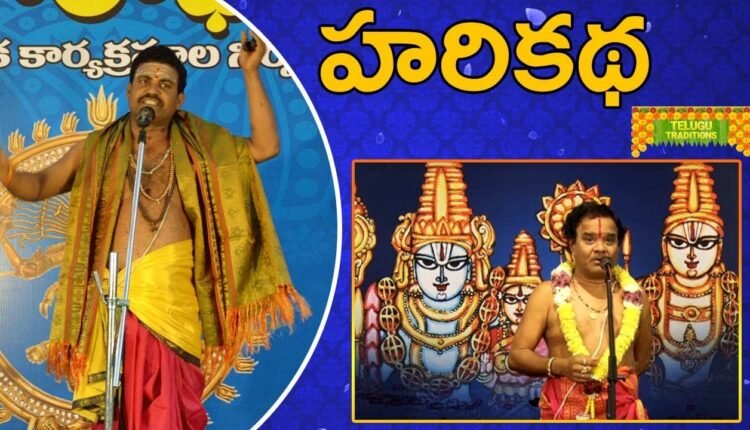Harikatha : The Significant Artform Involves Prominent & Popular Pioneers
Harikatha : A Traditional Telugu art form that involves the retelling of Hindu devotional stories, primarily Harililas (the divine plays of Lord Vishnu), accompanied by music and literature. The origin of Harikatha has different theories and interpretations. Some believe it originated from the Vedas, while others attribute its origin to Narada Bhakti Sutra or the transformation of Yakshagana.
In Andhra Pradesh, It evolved with innovative presentations and modern combinations. One unique aspect is the recitation of various ragas, enhancing the musical aspect of the performance.
Harikatha & Characters
All the characters in the story are performed by a single individual known as Bhagavatli or Bhagavatar. Prominent pioneers in this art form include Adibhatla Narayanadasa and Parimi Subramaniam Bhagavatar. The Bhagavatar takes on multiple roles and gracefully acts out the story for a duration of three hours. They speak, sing melodious songs, express sattvik emotions on their face, dance with their feet, and use hand gestures, all performed simultaneously with an attractive demeanor. This ability to portray multiple characters and convey the essence of the story is a distinct feature of Harikatha.
The attire of the Harikathaka (performer of Harikatha) is simple but adorned. They wear chirathas on their hands, anklets on their feet, a silk dowati panchakattu (traditional dress) tied around the waist, a silk scarf, and a flower garland around the neck, and apply a neat tilak on their forehead. These elements contribute to the visual appeal and overall aesthetic of the performance.
Also Read : Bhima Radhasanti : A Significant Milestone Celebrated After Completion Of 60 Years

